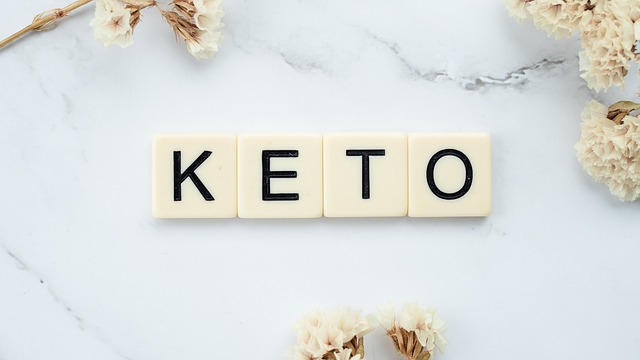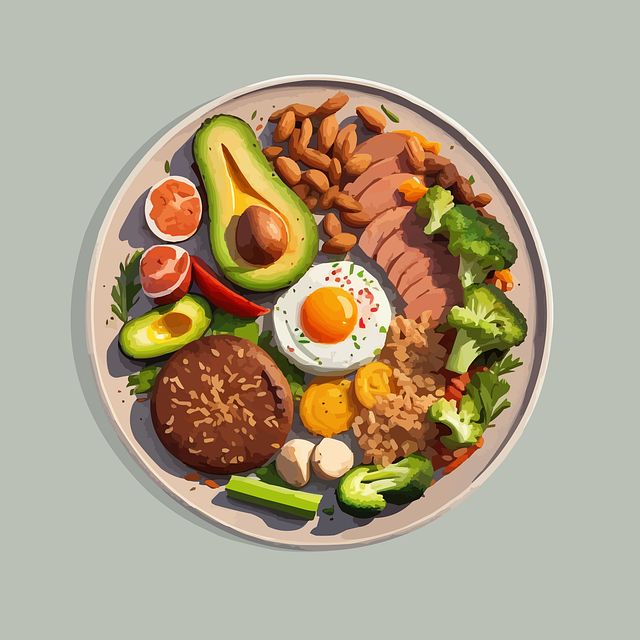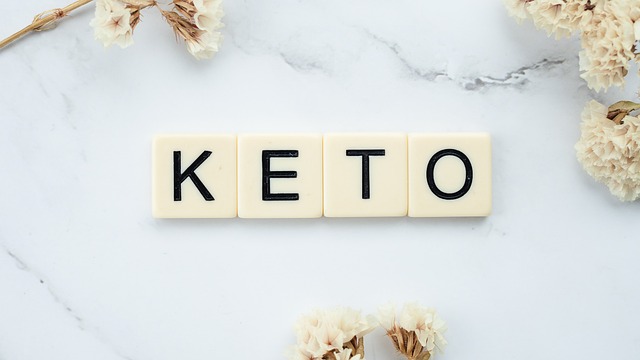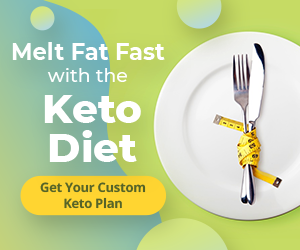Are you interested in trying the keto diet but not sure which plan is best for you? Well, you’re in luck because I’m here to help! Choosing the right keto diet plan can make a big difference in the success of your weight loss journey and overall health. In this article, I’ll delve into the details of various keto diet plans and give you some tips on how to choose the one that suits you best. So, sit back, relax, and let’s explore the world of keto!
Keto Diet Plan
When it comes to choosing the best keto diet plan, it’s important to consider your personal needs and goals. There are many different variations of the keto diet, such as the standard ketogenic diet, cyclical ketogenic diet, targeted ketogenic diet, and high-protein ketogenic diet. Each plan has its own unique approach and may be more suitable for certain individuals depending on factors like activity level, food preferences, and health conditions.
In the upcoming article, we’ll dive deeper into each type of keto diet plan, discussing their benefits and drawbacks, as well as providing helpful tips on how to choose the right plan for yourself. Whether you’re looking to shed a few pounds or simply improve your overall well-being, understanding the ins and outs of the various keto diet plans will empower you to make an informed decision. So, let’s get started and find the best keto diet plan for you!
Get Your Custom Keto Diet Plan
Understanding the Keto Diet
The keto diet, short for ketogenic diet, is a low-carbohydrate, high-fat diet that has gained popularity for its ability to promote weight loss and improve overall health. The key principle of the keto diet is to put your body into a metabolic state called ketosis, where it relies on fat for energy instead of carbohydrates. By drastically reducing your carbohydrate intake and increasing your fat consumption, your body starts to burn stored fat for fuel, resulting in weight loss.
Key Principles of the Keto Diet
The keto diet is centered around consuming foods that are low in carbohydrates and high in healthy fats. The main macronutrient ratios followed on a keto diet are typically 70-75% fat, 20-25% protein, and 5-10% carbohydrates. By restricting your carbohydrate intake, you force your body to enter a state of ketosis, where it primarily uses fat for fuel instead of glucose.
Benefits of Following a Keto Diet
Following a keto diet has been associated with several health benefits. Some of the potential benefits include:
- Weight Loss: The keto diet promotes weight loss by reducing appetite and increasing fat burning.
- Improved Blood Sugar Control: By limiting carb intake, the keto diet may help stabilize blood sugar levels and improve insulin sensitivity.
- Increased Energy Levels: Once your body adapts to burning fat for fuel, you may experience increased energy levels and improved mental clarity.
- Reduced Inflammation: The keto diet has been shown to reduce inflammation in the body, which may benefit individuals with chronic inflammatory conditions.
- Lowered Triglyceride Levels: Following a keto diet has been associated with reduced levels of triglycerides, a type of fat found in the blood.
How the Keto Diet Works for Weight Loss
The primary mechanism behind weight loss on the keto diet is the shift from carbohydrate metabolism to fat metabolism. When you consume a high-carbohydrate diet, your body converts carbohydrates into glucose, which is used as the primary source of energy. Any excess glucose is stored as glycogen in the liver and muscles or converted into fat.
By limiting carbohydrate intake and increasing fat consumption, the keto diet forces your body to burn fat for energy instead. When your body enters a state of ketosis, it starts breaking down stored fat into ketones, which are then used as fuel for the body. This leads to a reduction in body weight and fat mass over time.
Determining Your Health and Weight Goals
Before starting any diet plan, it is essential to assess your current health condition and set realistic weight loss goals. Additionally, consider any dietary restrictions or allergies you may have that could limit your food choices on a keto diet.
Assessing Your Current Health Condition
It is crucial to evaluate your current health condition before embarking on any diet plan. If you have any preexisting medical conditions, such as diabetes or heart disease, it is essential to consult with a healthcare professional before starting a keto diet. They can provide guidance and ensure that the diet is safe for you to follow.
Setting Realistic Weight Loss Goals
Setting realistic weight loss goals is crucial to staying motivated and achieving success on a keto diet. Aim for a gradual and sustainable weight loss of 1-2 pounds per week. Rapid weight loss may not be sustainable in the long run and could potentially lead to nutrient deficiencies or other health issues.
Considering Any Dietary Restrictions or Allergies
If you have any dietary restrictions or allergies, it is important to take them into consideration when choosing a keto diet plan. Some individuals may have sensitivities to certain foods commonly consumed on a keto diet, such as dairy or nuts. Look for a plan that allows for customization and flexibility to accommodate your specific needs.

Get Your Custom Keto Diet Plan
Researching Different Keto Diet Plans
With the increasing popularity of the keto diet, there are numerous keto diet plans available. It is essential to research and compare different plans to determine which one is the best fit for you.
Exploring Popular Keto Diet Plans
Start by exploring popular keto diet plans, such as the Standard Ketogenic Diet (SKD), Targeted Ketogenic Diet (TKD), or Cyclical Ketogenic Diet (CKD). Each plan has its own variations in macronutrient ratios and target audience. Understanding the different aspects of each plan will help you make an informed decision.
Comparing the Pros and Cons of Each Plan
Consider the pros and cons of each keto diet plan. Some plans may be more restrictive or difficult to follow, while others may allow for more flexibility. Think about your lifestyle, preferences, and goals to determine which plan aligns best with your needs.
Reading Reviews and Testimonials from Others
Reading reviews and testimonials from individuals who have followed different keto diet plans can provide valuable insights. Take note of their experiences, challenges, and successes to gain a better understanding of what to expect. However, keep in mind that everyone’s journey is unique, and what works for one person may not work for another.
Consulting with a Healthcare Professional
Before starting any new diet plan, it is crucial to consult with a healthcare professional. They can provide personalized advice and guidance based on your individual health needs and weight loss goals.
Importance of Seeking Medical Advice
A healthcare professional, such as a registered dietitian or a doctor, can assess your overall health and determine if the keto diet is a suitable option for you. They can consider any preexisting medical conditions, medications you may be taking, and provide guidance to ensure you’re following a safe and balanced diet.
Discussing Your Health and Weight Goals
During the consultation, discuss your health and weight goals with the healthcare professional. Be open and honest about your expectations and any challenges you foresee. This will allow them to provide tailored recommendations that align with your objectives.
Getting Personalized Recommendations
Based on your health and weight goals, the healthcare professional can provide personalized recommendations for a keto diet plan. They can suggest specific macronutrient ratios, food choices, and any necessary modifications to meet your nutritional needs.

Get Your Custom Keto Diet Plan
Evaluating the Macronutrient Ratios
Macronutrient ratios play a crucial role in a keto diet. It is essential to understand the recommended ratios and customize them according to individual needs.
Understanding the Role of Macronutrients
Macronutrients, also known as macros, are the three main components of our diet: fat, protein, and carbohydrates. On a keto diet, the macronutrient ratios are adjusted to promote ketosis and fat burning. Fat becomes the primary source of fuel, while carbohydrates are significantly reduced.
Determining the Ideal Ratios for a Keto Diet
The ideal macronutrient ratios for a keto diet typically range from 70-75% fat, 20-25% protein, and 5-10% carbohydrates. However, these ratios can be customized based on individual needs and preferences. Some individuals may require slightly higher protein intake to support muscle growth and recovery, while others may thrive on a lower-carbohydrate approach.
Customizing the Ratios Based on Individual Needs
It is essential to customize the macronutrient ratios based on individual needs and goals. Factors such as activity level, body composition, and weight loss objectives should be considered when determining the ideal ratios. Consulting with a healthcare professional or a registered dietitian can help you personalize your keto diet plan.
Considering Meal Planning and Preparation
Meal planning and preparation are key to a successful keto diet. By planning your meals and snacks in advance, you can ensure that you have keto-friendly options readily available.
Creating a List of Keto-Friendly Foods
Start by creating a list of keto-friendly foods that you enjoy. Include foods that are low in carbohydrates and high in healthy fats, such as avocados, nuts and seeds, fatty meats, and leafy greens. This will serve as a guide when you go grocery shopping or prepare your meals.
Planning Meals and Snacks in Advance
Plan your meals and snacks in advance to avoid making impulsive food choices that may not align with your keto diet plan. Set aside time each week to plan your meals, create a shopping list, and prepare meals in advance if needed.
Exploring Meal Delivery Options for Convenience
If meal planning and preparation seem overwhelming, consider exploring meal delivery options that cater to the keto diet. Many companies offer pre-portioned, keto-friendly meals that can be delivered to your doorstep. This can help save time and ensure you have access to nutritious meals that align with your dietary goals.

Get Your Custom Keto Diet Plan
Addressing Nutritional Deficiencies and Supplements
The keto diet, like any other restrictive diet, may come with the risk of nutrient deficiencies. It is important to address these deficiencies and consider appropriate supplementation if needed.
Identifying Potential Nutrient Gaps on a Keto Diet
Certain nutrients, such as fiber, certain vitamins, and minerals, may be limited on a keto diet due to the exclusion of certain food groups. Identify potential nutrient gaps by consulting with a healthcare professional or a registered dietitian. They can assess your current nutrient intake and recommend suitable modifications or supplements.
Finding Suitable Supplements to Meet Nutrient Needs
Supplementation may be necessary to meet specific nutrient needs on a keto diet. Nutritional supplements, such as a high-quality multivitamin, omega-3 fatty acids, or electrolyte supplements, can help fill any gaps and ensure you’re meeting your nutritional requirements.
Understanding the Importance of Electrolyte Balance
Maintaining electrolyte balance is crucial on a keto diet, as the reduced carbohydrate intake can affect electrolyte levels. It is important to monitor your electrolyte levels, particularly sodium, potassium, and magnesium, and adjust your diet or consider supplementation as needed. This can help prevent symptoms such as fatigue, muscle cramps, and dehydration.
Seeking Support and Accountability
Embarking on a new diet plan can be challenging, but having support and accountability can make a significant difference in your success.
Joining Online Keto Communities and Forums
There are numerous online communities and forums dedicated to the keto diet. Joining these communities can provide a wealth of information, support, and motivation. You can connect with like-minded individuals, share your experiences, and seek advice from those who have already been through the journey.
Finding a Diet Buddy or Accountability Partner
Find a diet buddy or an accountability partner who shares similar health and weight loss goals. Having someone to share your progress, challenges, and achievements with can help keep you motivated and on track. You can hold each other accountable and provide support during moments of temptation or doubt.
Tracking Progress and Celebrating Milestones
Tracking your progress and celebrating milestones along your keto diet journey can be highly motivating. Keep a food journal, measure your body composition, and take progress pictures to visually see the changes. Celebrate non-scale victories, such as increased energy levels or improved mental focus, as they are equally important markers of your success.

Gradual Transition and Adaptation
When starting the keto diet, it is essential to avoid drastic dietary changes and allow your body to gradually adapt to the new eating pattern.
Avoiding Drastic Dietary Changes
Sudden and drastic dietary changes can lead to discomfort and make it more challenging to adhere to the diet. Ease into the keto diet by gradually reducing your carbohydrate intake over a week or two.
Slowly Reducing Carbohydrate Intake
Slowly reduce your carbohydrate intake by cutting out processed and refined carbohydrates first. Focus on whole, nutrient-dense foods and increase your healthy fat intake to compensate for the calorie deficit. This gradual approach will help minimize withdrawal symptoms and make the transition smoother.
Managing Common Symptoms During Adaptation
During the adaptation phase, you may experience some common symptoms known as the “keto flu.” These symptoms include fatigue, dizziness, headaches, and irritability. Stay hydrated, increase your salt intake, and make sure to consume adequate electrolytes to help manage these symptoms. They typically subside within a few days to a week as your body adapts to using fat for fuel.
Conclusion
Choosing the best keto diet plan requires careful consideration of your health and weight goals, dietary preferences, and individual needs. Through understanding the key principles of the keto diet, researching different plans, consulting with a healthcare professional, and customizing the macronutrient ratios, you can make an informed decision about the right plan for you.
By investing in meal planning, addressing potential nutrient deficiencies, seeking support and accountability, and allowing for a gradual transition and adaptation, you can increase your chances of success on the keto diet. Remember to reflect on the knowledge gained, set realistic goals, and approach your chosen keto diet plan with commitment and enthusiasm. Remember, following a keto diet is a personal journey, and finding the best keto diet plan that works for you is key to achieving your health and weight loss goals.



